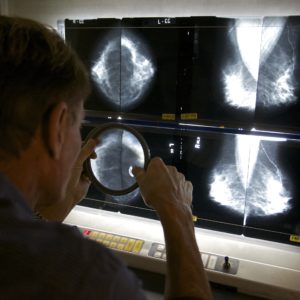Technology has a cold image in health care — the opposite of warm, human interaction. Telemedicine seems less intimate than a face-to-face, doctor-patient encounter. Medical smartphone apps mechanize parts of care that formerly involved personal engagement. Paradoxically, though, digital medicine can restore an element of humanity and intimacy to health care by freeing providers of the rote tasks that stand between them and their patients.
In my small hometown, in the 1950s, my pediatrician came to our front door with his black bag. My parents’ doctor was my mother’s lifelong friend, lived two blocks away, and saw them day or night. Our doctors saw us socially, and had intimate knowledge of our medical histories. They dispensed reams of advice. Many today long for this bygone world (which wasn’t as rosy as memory suggests).
Today, emotional distance separates doctors and patients. Insurers force physicians to hurry through their patients. Doctors stare into computer screens. Patients move frequently; community organizations no longer bring patients and doctors into the informal social contact common in my hometown. Millennials are stereotypically unconnected.
More than anything, sheer mathematics frustrates our desire to reconstruct the nostalgic patient-provider relationship. In America, roughly 200,000 primary care physicians (PCPs) serve 320 million people — 1,600 patients per PCP. If each doctor devoted 1,600 hours per year to patients, that would be one hour per patient per year — scant time to become familiar with a patient and his or her medical history.
Worse, some PCP time is consumed by administrative tasks, continuing education, travel and so forth. Some patients require more than one hour per year, leaving less for the remainder. As people move, many of these visits are a return to square one — introducing a new doctor to the basics of one’s life and person.
The realities of math and 21st-century social patterns only allow a few fortunate people to enjoy the half-mythical mid-century ideal. Humanizing healthcare today means stretching 15-minute visits by a few minutes, making each minute count, and enabling patients to perform some of the time-consuming tasks that formerly burned up PCPs’ time.
That’s where digital technologies come in. After a bout of cardiac arrhythmia, I installed an AliveCor device on my iPhone. Whenever I feel a suspicious heartbeat, this device lets me perform an EKG in 30 seconds and receive an instant analysis. Anytime this device prevents a patient from making an unnecessary PCP or ER visit, doctors have additional time to focus on patients who really need face-to-face care.
Visiting doctors via smartphone- or tablet-based telemedicine apps like Doctor on Demand relieve PCPs of routine appointments, leaving them free to spend more time with patients with more complex issues. Telemedicine’s 24/7 capabilities can encourage early intervention, reducing the need later on for more time-consuming treatment of a full-blown illness.
Asynchronous telemedicine like Lemonaid can relive a PCP of the time-consuming task of managing the flow of prescription drugs. Augmedix frees a physician of data-entry responsibilities that can consume 35 percent of her time. Apps like myStrength allow patients to better manage their depression and other conditions on their own. 3D-printed prosthetics from e-NABLE allow patients and laypeople to expand the physical capabilities and ease the anxiety of children born without a hand or fingers. Surgery Center of Oklahoma’s transparent pricing can reduce the time a PCP must spend advising patients on how to navigate the world of surgery.
Eventually, Electronic Health Records (EHRs) will be central to freeing up physicians’ time. Physicians and other providers will be able to enter data with ease — and outputs will be concise, intuitive and immensely valuable for therapeutic purposes. This is not true of today’s of cumbersome, reimbursement-focused, government-mandated EHRs, which doctors tend to view as time-wasters rather than time-savers. In fact, present-day EHRs sour many physicians on the whole idea of digital health.
At their best, digital technologies are complements, not substitutes, for PCPs. They can relieve the PCP of rote tasks that distract her from providing her highest value — cognition, communication and compassion — skills and that cannot be automated. In a mobile, socially disconnected world of 200,000 doctors and 320 million patients, time is likely to be technology’s greatest gift.

